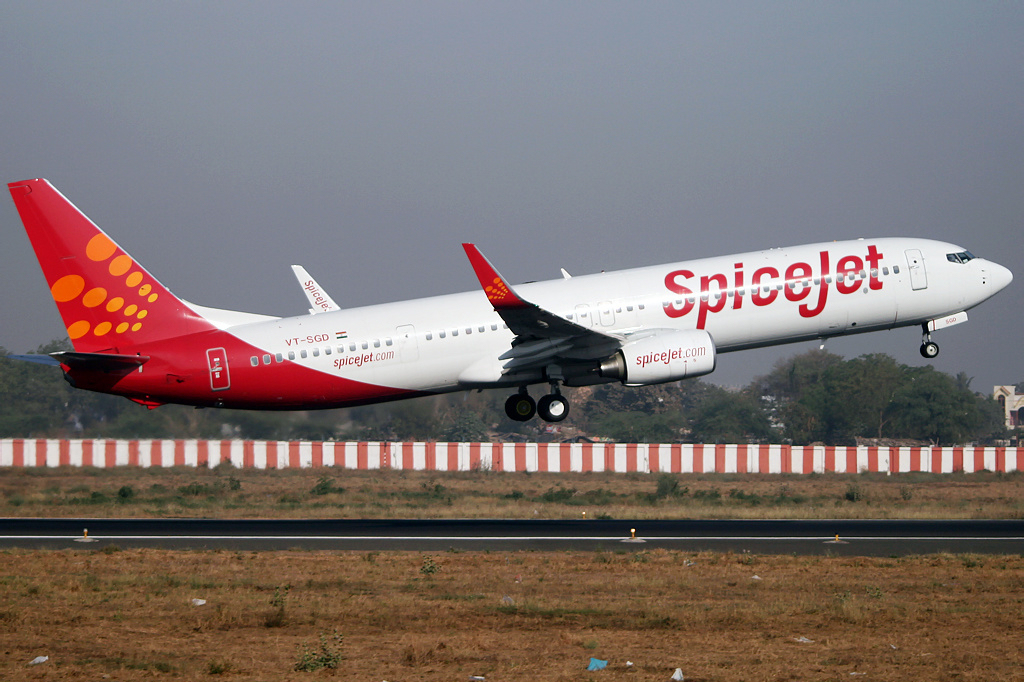In June 2010, Kalanithi Maran took over SpiceJet. I wrote an article around the takeover, in the newspaper I used to work for at that point of time, starting with the line “It takes a brave man to buy an airline.”
Towards the end of the article I quoted Warren Buffett. This was something the Oracle of Omaha had written in his annual letter to Berkshire Hathaway shareholders, in February 2008. As Buffett wrote: “Now let’s move to the gruesome. The worst sort of business is one that grows rapidly, requires significant capital to engender the growth, and then earns little or no money. Think airlines. Here a durable competitive advantage has proven elusive ever since the days of the Wright Brothers. Indeed, if a farsighted capitalist had been present at Kitty Hawk, he would have done his successors a huge favor by shooting Orville down.”
What made Buffett say this? “The airline industry’s demand for capital ever since that first flight has been insatiable. Investors have poured money into a bottomless pit, attracted by growth when they should have been repelled by it. And I, to my shame, participated in this foolishness when I had Berkshire buy U.S. Air preferred stock in 1989. As the ink was drying on our check, the company went into a tailspin, and before long our preferred dividend was no longer being paid. But we then got very lucky. In one of the recurrent, but always misguided, bursts of optimism for airlines, we were actually able to sell our shares in 1998 for a hefty gain. In the decade following our sale, the company went bankrupt,” wrote Buffett.
After a shorter version of this piece of wisdom from Buffett, I closed the article on SpiceJet, with the line: “Surely, Maran knows what he is up against.” As it has turned out, I was hoping against hope. SpiceJet is now in major trouble and has had to scale back its operations.
Between October 2013 and September 2014, the company faced losses of Rs 928.9 crore. During the period July to September 2014, the company made losses of Rs 310 crore. This, despite the fact that global oil prices fell during the period.
In the last few months the airline has also used what aviation industry insiders term as the “Christmas tree” option. This essentially means that the airline is taking out spare parts from its aeroplanes and using them for other planes in its fleet. Long story short: it doesn’t even have the money to pay for spare parts.
The commercial aviation business is a huge cash guzzler and has led many a capitalist to his ruin—Vijay Mallya being the latest such example. And as things currently seem Maran’s SpiceJet seems headed that way.
This is not only an Indian phenomenon, it seems to be the case globally. Economist Severin Borenstein examined the scenario in the United States in a 2011 research paper. He found that the airlines had lost around $60 billion (2009 dollars) between 1978 when the aviation sector in the United States was deregulated and 2009. High taxes were a reason for the losses and so was the fall in demand after 9/11.
A February 2014, article in The Economist suggests that profits margins of airlines have been less than 1% on average over the last 60 years. This makes me wonder why do businessmen still want to enter this sector?
Interestingly, airlines made a profit of only $4 per passenger in 2012. Another interesting study carried out by McKinsey points out that in 2010, around $500 billion of capital was invested in the airline industry. The overall cost of capital for this stood at around 7-8%, whereas the return on invested capital was at 2.8%. No wonder investors constantly lose money on airline stocks.
What this tells us is that commercial aviation is a tough business to be in. And why is that the case?There are several reasons for the same:
a) It is a highly capital intensive industry.
b) There is a lot of competition.
c) It gets impacted by a lot of things that are not under its control (the overall economic sentiment, taxes, outbreak of illnesses, price of oil and so on)
d) While the industry has to face a lot of competition, the industries that airlines have to deal with are highly monopolistic. As an article in The Economist puts it “Two firms—Airbus and Boeing—provide the majority of the planes, and airports and air-traffic control are monopolies.” Given this, airlines are not always in the best position to control their costs.
e) For a very long period of time, airlines were run by governments, and hence, profit was not the only motive. Over the last few decades, the world has seen a spate of low cost carriers being launched. These airlines have given tough competition to full service carriers.
These are general reasons as to why airlines find it tough to make money. Some of these reasons apply to SpiceJet as well. But there are other major reasons as to why the airline is in trouble. Unlike Vijay Mallya’s Kingfisher which was confused about being a full service carrier or a low cost airline, SpiceJet was always a low cost airline. There was no confusion on that front.
But like Mallya, aviation is not Maran’s primary business. His primary business is spread across television channels, a cable TV distribution network and newspapers in the state of Tamil Nadu and the other Southern states. Further, these businesses have always had the political protection of the DMK party (Maran is the grand-nephew of DMK boss M Karunanidhi).
Maran’s lack of experience in the aviation sector started to come out as soon as he took over the airline. After taking over the airline he went around installing his own people to run the place. As a report in the Business World points out “With the change in ownership, everyone at the airline knew that the chief executive officer and chief financial officer would change…The replacements on the board were largely Maran’s own family members and trusted aides but not necessarily people with experience of running a business — leave alone an airline.”
The airline also saw a steady exit of employees who knew how the aviation business operated. Another major blunder committed by the airline was allowing IndiGo to capture the slots in the Delhi-Mumbai route, left vacant by Kingfisher, after it stopped flying.
As the Business World report referred to earlier points out “SpiceJet had roughly six to seven flights a day between the two metros and IndiGo had around seven to eight. Today, IndiGo has close to 15 flights between the two metros. Delhi-Mumbai drives the aviation business in India and accounts for almost 60 per cent of traffic in the country.”
This was more because of the lack of experience of running an airline than anything else. Moral of the story: It is one thing running a business with the protection of a political party and it is another thing running a business which has some semblance of competition.
To conclude, what the failure of airlines like Kingfisher, Air India and now SpiceJet, clearly tells us is that you cannot “also” be in the commercial aviation business. Mallya found this out the hard way. He also ran an airlines business, along with his primary liquor business, real estate business and some sports business. Maran seems to be headed Mallya’s way with his huge losses. The government owned Air India continues to accumulate losses, in a country where Railway infrastructure remains very poor. A report in the Mint newspaper points out that combined losses of airlines in India over a period of seven years ending March 2014, stood at close to $8.6 billion.
What a mess!
The article originally appeared on www.equitymaster.com as a part of The Daily Reckoning, on Dec 9, 2014

